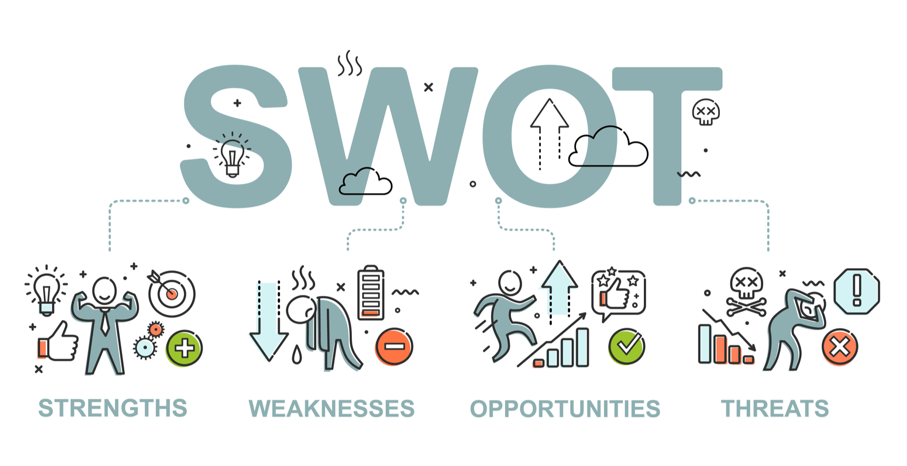The Market Overview and the SWOT Analysis of Nail Polish Market

The nail polish industry is a dynamic sector within the beauty and personal care market, characterized by rapid growth and evolving consumer preferences. As a market researcher, this blog will provide an overview of the nail polish industry, followed by a comprehensive SWOT analysis that examines the strengths, weaknesses, opportunities, and threats facing this vibrant market.
Nail Polish Market Overview
The global nail polish market was valued at $16.23 billion in 2023 and is projected to grow at a compound annual growth rate (CAGR) of 6.9%, reaching around $25.82 billion by 2030. This growth can be attributed to several factors, including:
- Increasing Disposable Incomes: As consumers have more disposable income, spending on beauty products, including nail polish, is on the rise.
- Influence of Social Media: Platforms like Instagram and TikTok have popularized nail art and trends, driving consumer interest and demand for innovative nail products.
- Technological Advancements: Innovations in nail polish formulations, such as long-lasting and eco-friendly options, are expanding the market.
- Growing Demand for Nail Art: The rise of nail salons and DIY nail art has contributed to increased consumption of nail polish products.
Key Players in the Market
Several key players dominate the nail polish industry, each contributing to its growth through innovation and marketing. Some of the major players include:
- L'Oréal S.A.: A leading cosmetics company with a diverse range of nail polish brands, including Essie and Maybelline.
- The Estée Lauder Companies Inc.: This luxury beauty company owns several high-end nail polish brands, such as OPI and MAC.
- Coty Inc.: A major player in the beauty industry, Coty owns popular brands like Sally Hansen and Rimmel London.
- Revlon: Known for its extensive range of nail polish products, Revlon continues to innovate with new colors and finishes.
- Nails Inc.: A UK-based brand known for its trendy nail products and collaborations with fashion brands.
- American International Industries: This company specializes in nail care products and has a strong presence in the nail polish market.
These players are continuously adapting to market trends and consumer preferences, ensuring their products remain relevant and appealing.
SWOT Analysis of the Nail Polish Industry

Strengths
- Diverse Product Range: The nail polish industry offers a wide variety of products, including gel, acrylic, and traditional nail polishes, catering to different consumer preferences and needs.
- Strong Brand Loyalty: Established brands like OPI and Essie have built strong customer loyalty over the years, leading to repeat purchases and brand recognition.
- Innovation and Trends: The industry is characterized by constant innovation, with brands frequently launching new colors, finishes, and formulations to attract consumers.
- Growing Nail Art Culture: The increasing popularity of nail art and customization has created a larger market for nail polish, as consumers seek unique and creative designs.
Weaknesses
- Health Concerns: Some consumers are becoming more health-conscious and may avoid traditional nail polishes due to concerns about harmful chemicals and toxins.
- Market Saturation: The nail polish market is becoming increasingly saturated, making it challenging for new entrants to gain a foothold and for established brands to maintain market share.
- Dependence on Trends: The nail polish industry is heavily influenced by fashion and beauty trends, which can change rapidly. Brands may struggle to keep up with these shifts.
- High Competition: Intense competition among established brands and new entrants can lead to price wars and reduced profit margins.
Opportunities
- Sustainability Trends: There is a growing demand for eco-friendly and non-toxic nail polish products. Brands that focus on sustainable practices and ingredients can capture a larger market share.
- Expansion into Emerging Markets: The rising middle class in emerging markets presents an opportunity for nail polish brands to expand their reach and tap into new consumer bases.
- E-commerce Growth: The rise of online shopping provides an opportunity for nail polish brands to reach a wider audience and increase sales through digital platforms.
- Collaborations and Partnerships: Collaborating with influencers, fashion designers, and other brands can enhance visibility and attract new customers.
Threats
- Economic Downturns: Economic instability can lead to reduced discretionary spending, affecting sales of non-essential beauty products like nail polish.
- Regulatory Challenges: Stricter regulations regarding product safety and ingredients can pose challenges for manufacturers, requiring compliance and potential reformulation of products.
- Counterfeit Products: The prevalence of counterfeit nail polish products can undermine brand integrity and consumer trust, impacting sales.
- Changing Consumer Preferences: As consumer preferences shift towards natural and organic products, traditional nail polishes may face declining demand.
Conclusion
The nail polish industry is a dynamic and rapidly evolving market that reflects changing consumer preferences, technological advancements, and the influence of social media. With a projected market value of $25.82 billion by 2030, the industry is poised for significant growth, driven by rising disposable incomes, increasing beauty consciousness, and the growing popularity of nail art.
The SWOT analysis highlights the strengths, weaknesses, opportunities, and threats facing the nail polish industry. Brands must leverage their strengths, such as diverse product offerings and strong brand loyalty, while addressing weaknesses like health concerns and market saturation.
- Industry
- Art
- Causes
- Crafts
- Dance
- Drinks
- Film
- Fitness
- Food
- Games
- Gardening
- Health
- Home
- Literature
- Music
- Networking
- Other
- Party
- Religion
- Shopping
- Sports
- Theater
- Wellness
- News


